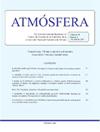在智利北部的阿利卡,太阳午时测量到非常高的红斑紫外线辐射剂量
IF 1
4区 地球科学
Q4 METEOROLOGY & ATMOSPHERIC SCIENCES
引用次数: 0
摘要
一般来说,新闻媒体和气象公报都会报道紫外线指数(UVI),以防止过度暴露在阳光下。然而,该信息并不能反映随着时间的推移累积的UVR总量对皮肤造成的累积损伤,即所谓的红斑剂量(ED)。这项研究分析了在30和在智利北部的阿里卡,太阳正午前后60分钟。结果表明,所有皮肤类型的SN ED均超过了最小红斑剂量(MED)。在夏季,短时间暴露在阳光下长达1小时,可能导致阳光暴露量比未受保护的人类皮肤可接受的职业安全限值高出10倍。本文章由计算机程序翻译,如有差异,请以英文原文为准。
Very high erythemal doses of ultraviolet radiation around solar noon measured in Arica, northern Chile
In general, news media and meteorological bulletins report on the ultraviolet index (UVI) to prevent against overexposure to the sun. However, this information does not reflect the accumulated damage to the skin induced by the total amount of UVR accumulated over time, known as erythemal dose (ED). This study analyzed the UVI and ED measured at 30 and 60 minutes around solar noon (SN) in Arica, North of Chile. The results show that SN ED exceeded the Minimum Erythema Dose (MED) for all the skin types. During the summer, short exposures to sunlight for up to 1 hour may result in sun exposure up to 10 times greater than the acceptable occupational safe limit for unprotected human skin.
求助全文
通过发布文献求助,成功后即可免费获取论文全文。
去求助
来源期刊

Atmosfera
地学-气象与大气科学
CiteScore
2.20
自引率
0.00%
发文量
46
审稿时长
6 months
期刊介绍:
ATMÓSFERA seeks contributions on theoretical, basic, empirical and applied research in all the areas of atmospheric sciences, with emphasis on meteorology, climatology, aeronomy, physics, chemistry, and aerobiology. Interdisciplinary contributions are also accepted; especially those related with oceanography, hydrology, climate variability and change, ecology, forestry, glaciology, agriculture, environmental pollution, and other topics related to economy and society as they are affected by atmospheric hazards.
 求助内容:
求助内容: 应助结果提醒方式:
应助结果提醒方式:


